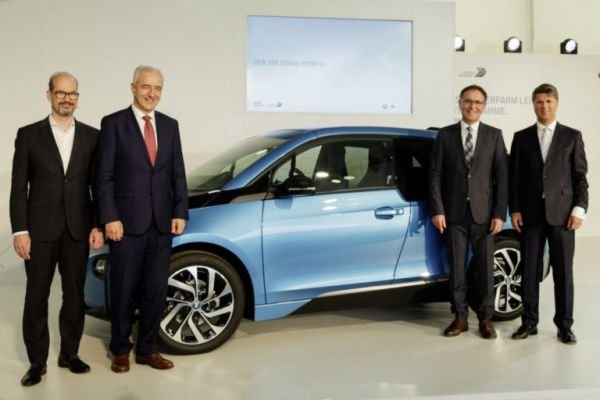The BMW Battery Storage Farm Leipzig has now been officially commissioned, with the second-life BMW i3 battery storage facility now slated to provide storage capacity to local wind energy generation, and also grid balancing capability.
The new BMW Battery Storage Farm Leipzig will use up to 700 high-capacity, used battery packs from BMW i3s — making for an alternative to the simple recycling of used electric vehicle battery packs.
With wind turbines located on the grounds of the plant, the BMW Battery Storage Farm Leipzig links decentralized captive production from renewable energies with local energy storage and an industrial consumer. The stationary battery storage farm is also integrated with the public power grid, which enables its electricity to be marketed as primary balancing power. When there is a surplus of power from renewable energies, large-scale battery storage can relieve the grid by absorbing electricity. When there is not enough power in the electricity grid, the facility can release electricity to help stabilize the grid.
Series production of the BMW i3 began in September 2013. Current daily production of the BMW i3 stands at more than 120 units, with an annual production volume in 2016 of 26,631 vehicles. Production in Leipzig includes making carbon-fiber parts and painted plastic parts for outer skin panels, the BMW i body shop and BMW i assembly hall.
This also comes at a time when BMW passed the production of its 100,000th BMW i3. In 2025, BMW intends to offer its customers a total of 25 models with electrified drive trains,






